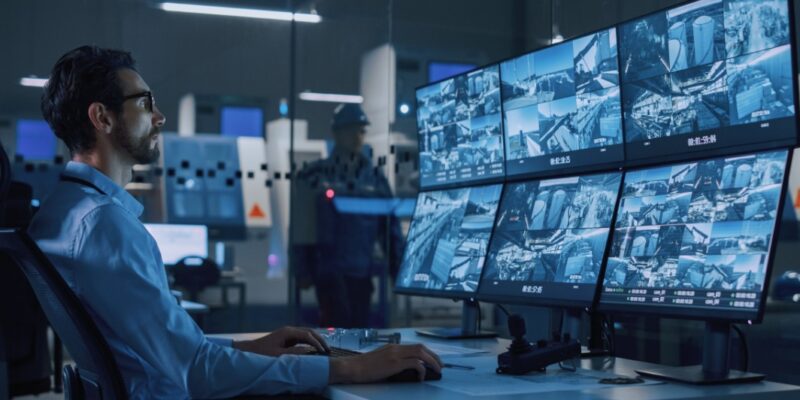In today’s fast-paced business environment, security is more than just a precaution—it’s a critical operational need. Whether you’re managing a small storefront or a sprawling industrial facility, choosing the right surveillance system can make all the difference in protecting your assets, employees, and customers. With a wide range of technology options available, understanding what to look for can help ensure you invest in a system that provides both protection and peace of mind.
Understanding Your Security Needs
Before selecting any surveillance solution, it’s important to assess your specific security challenges. Every business has unique risks, such as theft, vandalism, unauthorized access, or liability claims. Understanding these vulnerabilities helps shape the features and coverage your system should provide. For example, a retail environment might prioritize high-resolution indoor cameras and point-of-sale monitoring, while a warehouse may require wide-angle exterior views and license plate recognition.
A good starting point is conducting a thorough walkthrough of your facility to identify key access points, blind spots, high-traffic areas, and any zones with limited visibility. From there, you can decide whether you need full perimeter coverage, interior monitoring, or a mix of both.
Key Features to Consider
When evaluating surveillance systems, image quality is one of the most important factors. Look for high-definition (HD) or even ultra-high-definition (UHD) video capabilities to ensure clear, detailed footage. This level of clarity is essential for identifying faces, reading license plates, and gathering visual evidence in the event of an incident.
Another critical consideration is night vision. Many crimes and security breaches occur during low-light hours, so your cameras should be equipped with infrared (IR) or low-light technology to maintain visibility after dark. You may also want to explore options with wide dynamic range (WDR) to improve image quality in challenging lighting conditions.
Depending on your layout and needs, a mix of fixed, dome, and PTZ (pan-tilt-zoom) cameras may be beneficial. PTZ cameras offer flexibility and remote control functionality, allowing operators to zoom in and track movement in real time. Meanwhile, dome cameras are ideal for indoor spaces and often act as a visual deterrent due to their unobtrusive appearance.
On-Premises vs. Cloud-Based Storage
How your video footage is stored and accessed is just as important as how it’s captured. On-premises systems rely on local servers or DVRs to store video, providing complete control over your data but requiring space, maintenance, and IT resources. Cloud-based solutions, on the other hand, offer remote access and automated updates, with video footage stored securely offsite.
Cloud systems can be particularly useful for businesses with multiple locations or those needing to view footage on the go. However, they depend on a reliable internet connection, and some providers may charge for data storage beyond a certain threshold. The right choice will depend on your budget, infrastructure, and the level of access control you need.
Integration with Other Security Tools
Modern surveillance systems don’t work in isolation. Many businesses integrate video monitoring with access control, alarm systems, and communication tools for a more cohesive security strategy. For instance, pairing video feeds with two-way radios or intercoms allows teams to respond in real time to suspicious activity. Alerts from motion sensors or door entry logs can also trigger cameras to start recording, capturing important events as they unfold.
If your facility already uses other security tools, consider how easily your surveillance system can integrate. Open-platform systems or those with strong API support offer better compatibility and customization options.
Scalability and Futureproofing
Your business may grow, and so should your security system. Choose a solution that can scale with your operations. This means opting for a system that supports additional camera inputs, offers flexible licensing, and includes software updates that improve functionality over time.
Technology evolves quickly, so futureproofing your investment is key. Look for surveillance systems that support AI-driven analytics such as facial recognition, object tracking, or license plate detection. These features can improve situational awareness and reduce the workload on your security team.
Professional Installation vs. DIY
Some business owners are tempted by plug-and-play surveillance kits that advertise easy installation. While these systems may suffice for small, low-risk environments, professional installation is usually the better choice for complex or high-stakes applications. Certified installers not only ensure optimal camera placement but also make sure wiring, power, and network configurations are set up correctly.
Professional integrators can also help tailor a system to your exact needs, provide maintenance support, and ensure compliance with any industry regulations or insurance requirements.
Making the Right Investment
Choosing the right surveillance system is about more than just buying cameras. It’s about creating a comprehensive strategy that fits your business operations, risk profile, and future goals. By taking the time to assess your facility, understand key features, and consider integration options, you can build a solution that not only protects your property but also empowers your team to respond quickly and effectively when it matters most.
For professional support in finding a tailored video surveillance system for your facility, visit Highland Wireless.

